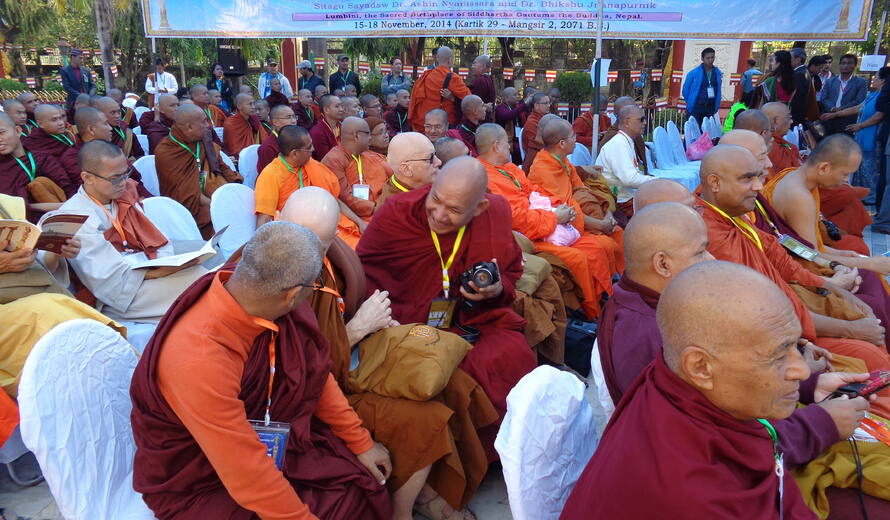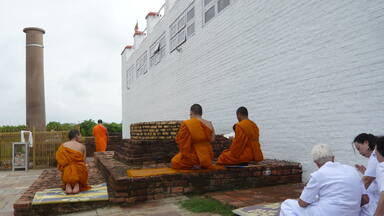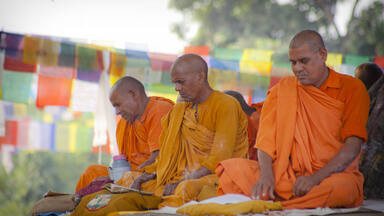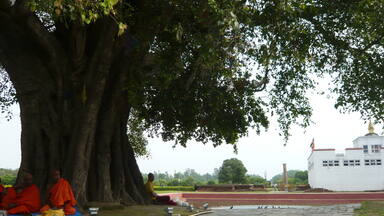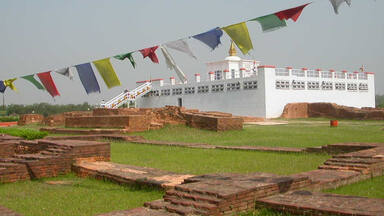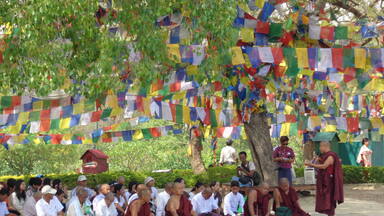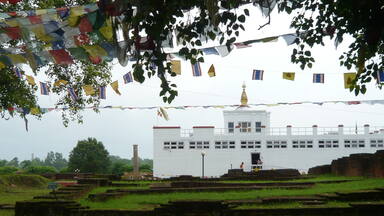2016 Lumbini International Steering Committee Meeting
The 2016 Lumbini International Steering Committee Meeting will take place from 19 to 21 April 2016 in Lumbini and will be opened by the Director-General of UNESCO as part of her first official visit to Nepal.
In January 2015, a very first cross-cutting Lumbini International Steering Committee (ISC) Meeting was jointly organized in Lumbini by the Nepali authorities and UNESCO, bringing together high-level officials of the Nepali Government, representatives of the local authorities, international experts, representatives of UNESCO and the Donor country, various NGOs, and representatives of the Buddhist community from Lumbini and Kathmandu. Together, they worked on finding solutions for a holistic approach to property management, adequately linking preservation imperatives and development requirements, and started a regular consultation process since then.
Inscribed in 1997 on the World Heritage List, the property ‘Lumbini, the birthplace of the Lord Buddha’ is located in Western Nepal. Lumbini’s spiritual significance and the richness of its archaeological remains demonstrate that it is not only the birthplace of the Buddha, but has also been a place of holy pilgrimage for thousands of years.
In 2010, a UNESCO/Japanese Funds-in-Trust Project ‘Strengthening the Conservation and Management of Lumbini, the Birthplace of the Lord Buddha, World Heritage Property’ was set up to support the conservation and management of the property, with the first phase carried out between July 2010 and July 2013, tackling the most urgent work and focusing on conserving the property’s Outstanding Universal Value and protecting it from irreversible negative impacts. The project also reinforced the capacity of the national authorities for the protection and sustainable development of Lumbini. However, the complex situation of the property in terms of conservation, archaeological preservation and overall management requires continuous efforts to further develop the capacities of the national authorities.
Additionally, the first phase of the Japanese FiT project clearly demonstrated that preservation and management efforts for the World Heritage property of Lumbini can only be successful if they take into account two adjacent and related sites currently placed on the Tentative List of Nepal: Ramagrama, the relic stupa of the Lord Buddha, and Tilaurakot, the archaeological remains of the Shakya kingdom, led by Buddha’s father. Furthermore, there is a need for a holistic, sustainable approach that links preservation imperatives with development requirements, as can be seen from the increasing number of private and semi-private investors who express interest in launching new initiatives in the Lumbini Development Area. As a response to these projects and initiatives in and around Lumbini, which are very likely to shape the property’s future, a second phase of the project began in 2014 (UNESCO/Japanese Funds-in-Trust Project ‘Strengthening the Conservation and Management of Lumbini, the Birthplace of the Lord Buddha, World Heritage Property’ Phase II, 2014 – 2017) with the overall objective of enabling the national authorities to take a proactive and sustainable approach to protecting and managing the World Heritage property, while safeguarding the cultural assets of the greater Lumbini area, in particular of Ramagrama and Tilaurakot.
To download the Provisional agenda and the list of participants, please click here.
Lumbini
Lumbini, Nepal
